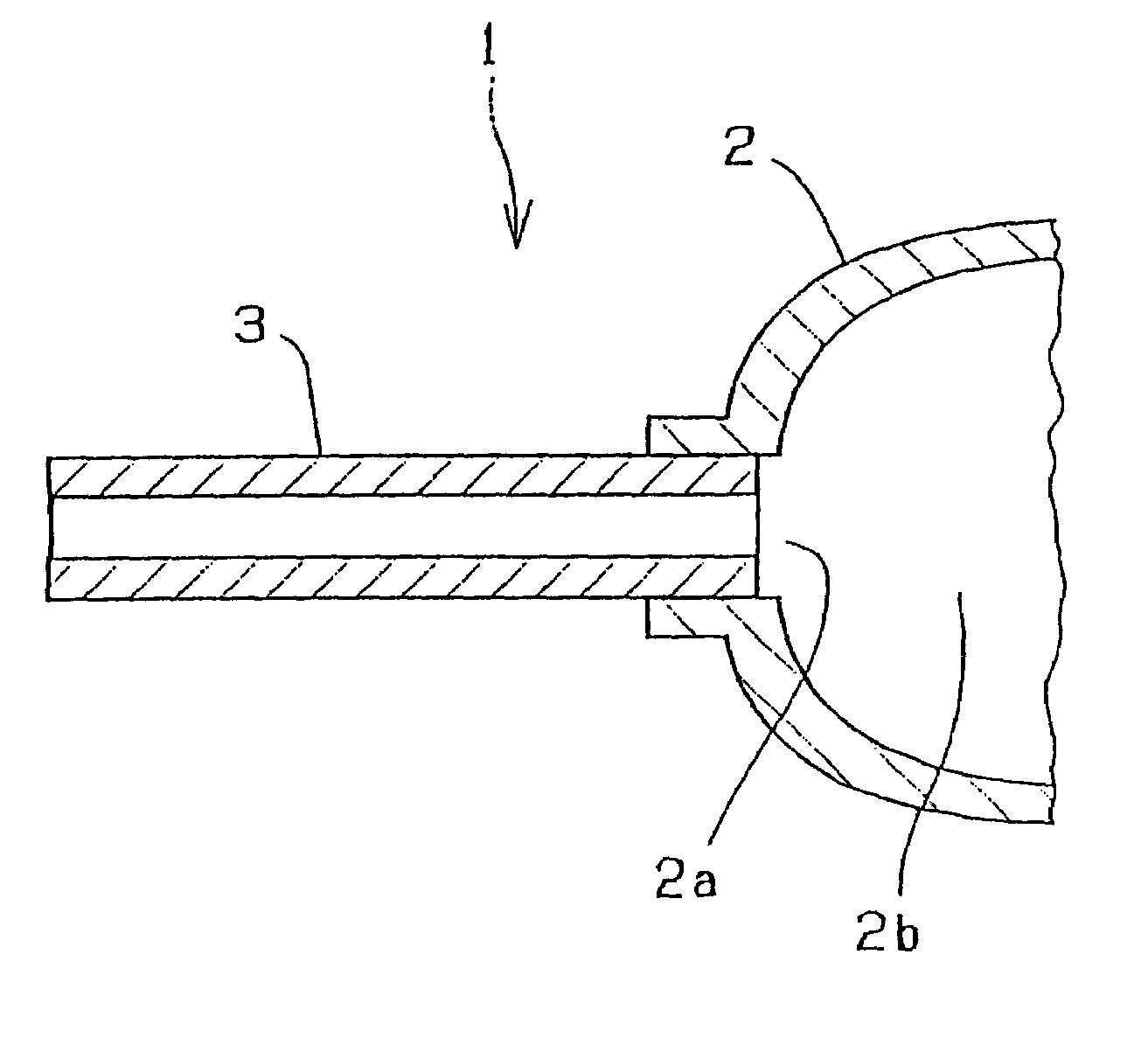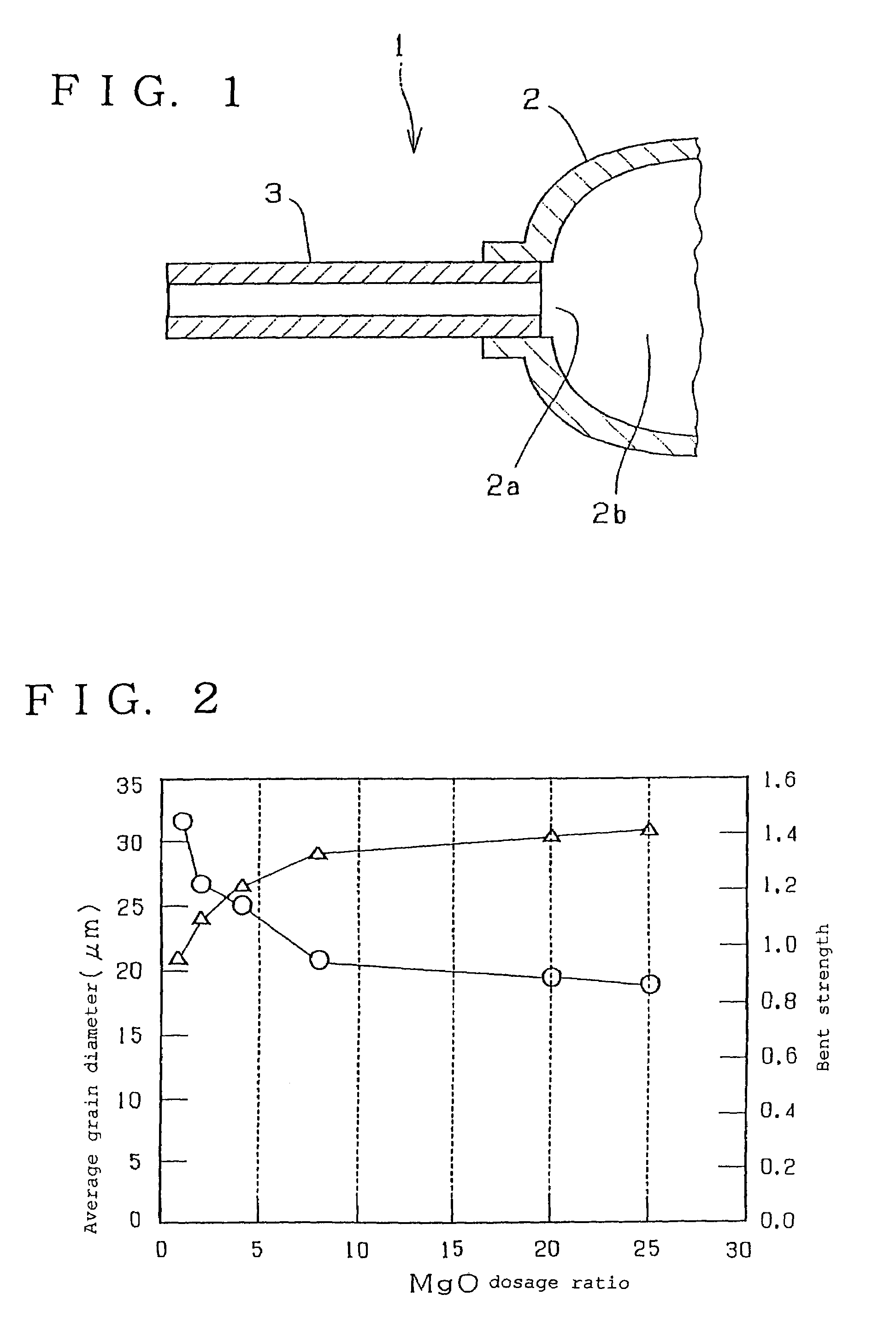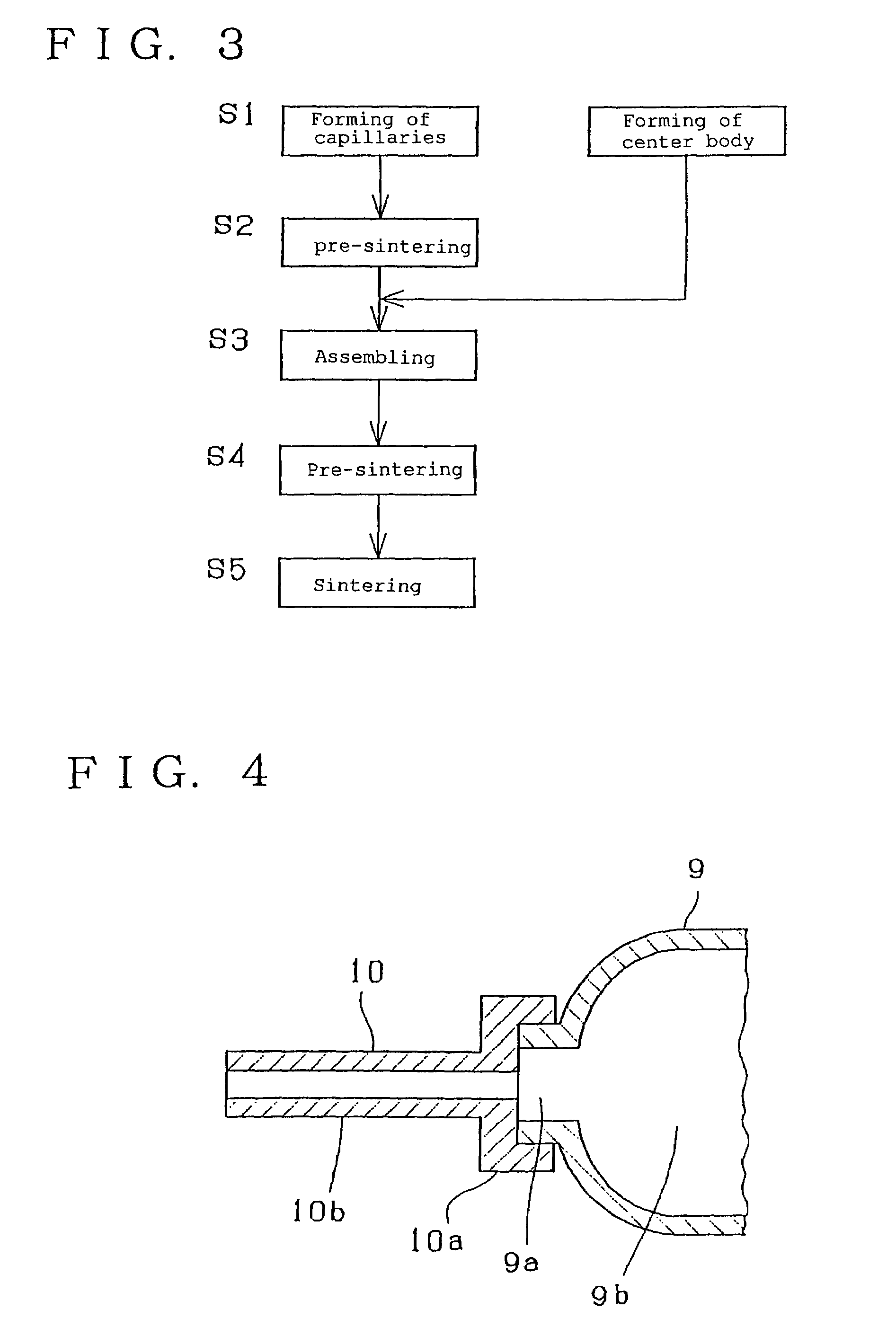High pressure discharge vessel for an alumina high-intensity discharge lamp
a discharge lamp and high-intensity technology, which is applied in the manufacture of electric discharge tubes/lamps, cold cathode manufacture, electrode systems, etc., can solve the problems of physical strength decline and possible cracks, and achieve the effects of increasing physical strength, reducing physical strength, and minimizing crack generation
- Summary
- Abstract
- Description
- Claims
- Application Information
AI Technical Summary
Benefits of technology
Problems solved by technology
Method used
Image
Examples
second embodiment
[0025]FIG. 4 is an explanatory cross sectional view of an electrode section showing the present invention. A central body 9 has an opening 9a provided at each of both, left and right (not shown), ends of a discharge space 9b thereof. Each of the openings 9a of the body 9 is closed off with a capillary 10 in which an electrode material (not shown) is inserted and secured by sealing. The capillary 10 comprises a cover portion 10a for closing the opening 9a of the body 9 and a capillary portion 10b extending outwardly and vertically from the center of the cover portion 10a.
[0026]A method of fabricating the second embodiment comprises the steps of forming the central body 9 and the capillary 10 of an alumina material or an alumina-based ceramic material and after pre-sintering, sintering the central body 9 at 1850° C. The capillary 10 after being formed is pre-baked at 1200° C. to 1400° C. Then, both are joined to each other and fired at 1700° C. The cover portion 10a is inserted into ...
third embodiment
[0028]FIG. 5 illustrates the present invention. A central body 5 of a cylindrical shape has two openings provided in both ends thereof, each the opening closed off with a ring-like plug 6. A capillary 7 is inserted into the center hole of the opening. A tubular member 8 is fitted onto the capillary 7, thus forming a double-capillary structure.
[0029]The body 5, the plug 6, and the capillary 7 are assembled and joined by a conventional sintering method, such as a shrink-fit method by sintering at 1850° C., which is based on a difference in the shrinkage. After the sintering step, the tubular member 8 is fit onto the capillary 7 and subjected to a re-sintering process. For example, the tubular member 8 is fired at 1200° C., fit onto the capillary 7, and fired again at 1700° C. to join with the capillary 7 in a shrink-fit manner.
[0030]This can increase the physical strength of the capillary, hence permitting a conventional arrangement of the discharge lamp to be increased in the physica...
PUM
 Login to View More
Login to View More Abstract
Description
Claims
Application Information
 Login to View More
Login to View More - R&D
- Intellectual Property
- Life Sciences
- Materials
- Tech Scout
- Unparalleled Data Quality
- Higher Quality Content
- 60% Fewer Hallucinations
Browse by: Latest US Patents, China's latest patents, Technical Efficacy Thesaurus, Application Domain, Technology Topic, Popular Technical Reports.
© 2025 PatSnap. All rights reserved.Legal|Privacy policy|Modern Slavery Act Transparency Statement|Sitemap|About US| Contact US: help@patsnap.com



